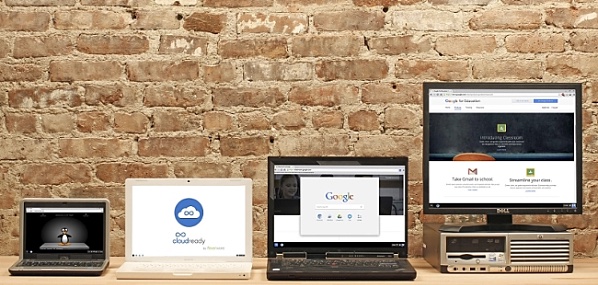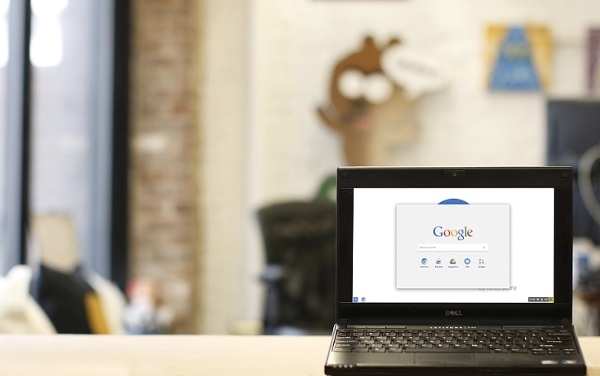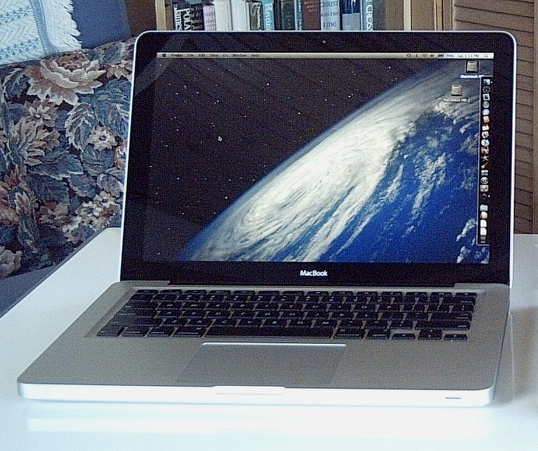Should you Give Your Aging MacBook A New Lease On Life As A Chromebook? – The ‘Book Mystique
What’s your favorite strategy for extending the useful life of your computer hardware? Or maybe that’s not an issue for you. Some people upgrade their system hardware every one to three years, regardless of whether there is objective need to or not. Usually not, if it’s an Apple product. Apple hardware is typically overbuilt and so reliable that most often it outlives its practical service life in good working order.
Not that I’m complaining. The consistant quality of design, materials, and workmanship are a big part of what keeps me ponying up for Apple hardware as opposed to cheaper competition. Some of us also take satisfaction, and save a lot of money, by extending the practical service life of our computer hardware. My personal best effort is a couple of 2000 vintage Pismo PowerBooks that I kept in active. daily use for 15 years with the help of processor, RAM, hard drive and optical drive upgrades, and a replacement screen and sound board in one. Actually, these tough old machines still work fine and get limited use running contemporary peripherals and software.
Unfortunately, I can’t hope to ever match that record with any of the current Non-upgradable, virtually hermetically sealed Mac laptops. However, that doesn’t mean there’s no way to squeeze an extra year or three of useful service out of middle-aged Apple laptops that are not supported by the most recent versions of OS X.
I’ve been intrigued by Google’s ChromeBook concept since I first heard of it. The price of the hardware can be quite reasonable and the software is of course free. It’s no wonder as to why Chromebooks have become Apple’s stiffest competition in the education market. According to Google, every school day, 30,000 new Chromebooks are activated in U.S. classrooms — more than all other education devices combined — and more than 2 million teachers and students in more than 150 countries have the Share to Classroom Chrome extension which launched last September and gets students onto the same webpage, instantly. Chromebooks also relieve users of software update hassle and bother, taking place automatically in the background online so you’re continually kept up to date, with the latest virus protection. Chromebooks also tend to be fast, require no setup, and have decent battery charge life.
As, for software, it’s a good news/bad news dynamic. The good news is that Chromebooks come with Google’s suite of free applications including Google Docs, Sheets, and Slides, which respectively enable users to create text documents, spreadsheets, and presentations in real-time with your files automatically backed up online. You can also open and edit Microsoft Word, Powerpoint, or Excel files. The bad news is that notwithstanding Google’s claim that there are “thousands” of apps, extensions, and themes for Google Chrome available on the Chrome Web Store there’s not a whole lot of software you’re used to and may want to keep using available for Chromebooks.
For example popular video communication medium Skype isn’t supported, although Google suggests their Google Hangouts as a surrogate. Photoshop, Pixelmator, Toyviewer, and a raft of other Mac and Windows image editing and optimization apps are not supported either, alThough Aviary (bitmap) and Cacao (drawing) are available on the Chrome Web Store.
Chromebooks come with 100GB of free Google Drive Cloud storage for two years, and at least 16GB of internal storage, and with Google Photos, you get free, unlimited, storage for photos and videos.
You can listen to music using Google Play Music or apps like Songza and Rdio, and stream movies online using apps like YouTube, Netflix, and sites like Shomi.
A fairly broad range of Chromebooks are available from several major PC manufacturers including ASUS, Acer, HP, Toshiba, ranging upward in price from the ASUS C201 at $179.95.
Neverware’s CloudReady Offers A Chromebook Conversion Option For Older Laptops
New York based Neverware has been offering a free version of its CloudReady operating system that, in partnership with Google can convert more than 200 older PC or Mac laptop models into fully functional Chromebooks. The lightweight, browser-based design means you can breath new life as it were into older machines and put them back into useful service. A list of certified models and system requirements can be found at:
https://docs.google.com/document/u/1/d/1oaFfS3QZia17FE8UBMEF4xNKhz6U2iAtbPmxZTethF0/pub
Like the paid version of CloudReady, the free version has been certified by Neverware on nearly 200 computer models and can be used on hundreds of others. Both versions include automatic updates and simple installation from a USB thumb drive. Since CloudReady is based on the same code that powers Chromebooks, it offers complete and secure integration with Google Apps and other Google services. transforming existing hardware into simple, secure, and fast machines that can be managed right alongside Chromebooks.
“We’re very excited to be able to offer a free version of CloudReady,” said Neverware CEO Jonathan Hefter at the free version rollout last fall. “This will allow users around the world to have free access to the simplicity and speed of Chromebooks, using the computers they already have.”
The paid version of CloudReady, which offers dedicated support and integration with Google’s device management console, launched in spring 2015, and according to NeverWare has already been purchased by over 100 school districts in the United States, with CloudReady pilot programs underway with organizations in 10 countries.
“Our teachers are amazed that they are using the same hardware – the difference in student engagement is astounding,” Dawn Young, Director of Educational Technology at Binghamton School district in New York is cited commenting in a NeverWare release. “As we move to learning environments that require increased access to technology, CloudReady has been a great way to increase our device to student ratio.”
CloudReady can be downloaded for free at: http://neverware.coml
My oldest Mac currently in regular service is a late 2008 model aluminum Core 2 Duo MacBook, which currently is running OS X 10.11 ElCapitan reasonably well — certainly well enough that I wouldn’t seriously consider converting it to a Chromebook at this point.
In some respects, however, my wife would be a logical candidate for Chromebook usership. She still uses a 2003 vintage 17-inch PowerBook as her daily driver pretty much exclusively for email, Web surfing, basic writing projects, a bit of social networking and simple photo editing. She has no enthusiast interest in computers, much less computer maintenance, and the automated software updates and maintenance with a Chromebook would appeal. I’ve suggested making a switch to a Chromebook, but she likes the big old PowerBook, and as long as it does what she demands of it, she has little enthusiasm for making a change and climbing any new learning curve.
However OS X 10.5 Leopard — the most recent OS version the old PowerBook supports — is getting awfully long in the tooth, and eventually push will come to shove. It would be great if CloudReady supported the PowerBook, but it’s too old for even that.
At some point in the future, perhaps not too far off, when the old PowerBook is no longer practically viable, handing off the half-decade younger MacBook to her will be an option to consider, possibly as a CloudReady Chromebook.
For more information, visit:
http://www.neverware.com



